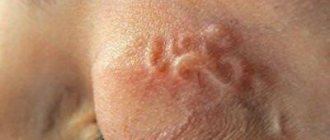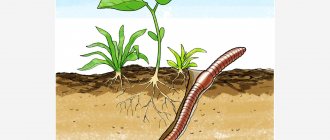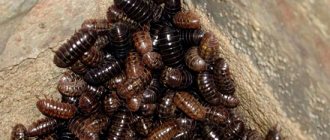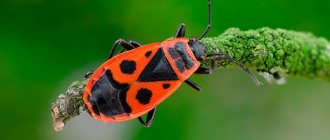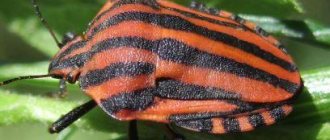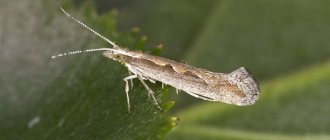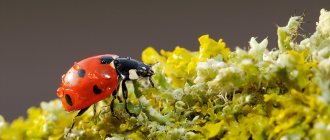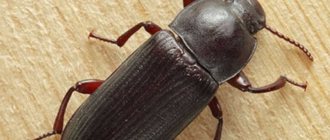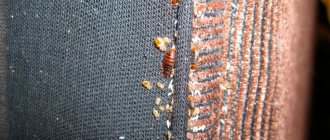The earth is inhabited by huge hordes of insects. Their exact number is still unknown. Currently, it is estimated that there are between 2 and 8 million species. Only one million insects have been described, while several thousand more new species are discovered every year. Some species are so unique that they have only one or a few representatives. If we take insect pests, there are more than 700 thousand species. The number of parasites for both humans and agriculture is quite large, but you can learn to fight them if you know their description and characteristics.
Insect pests of roots
The most important pest of roots is the click beetle. It looks very unsightly, but causes enormous damage to agricultural land. In particular, not the beetle itself, but its offspring larvae, which are called “wireworms”. Wireworms are found in the top layer of soil, where they first eat plant seeds and then make their way inside the root system itself. Damaged plants become victims of saprotrophs, as a result of which they quickly rot. To protect against these pests, preventive measures should be taken, because if it has already started, it will be extremely problematic to get rid of it.
Click beetle
Insect pests of fruits
As a rule, the main pests of fruits are the larvae of a certain group of insects. This group includes such orders as butterflies, Hymenoptera, Coleoptera and Diptera. These pests are endowed with a number of features, which include a hidden lifestyle and dependence on the fruiting phase of the plants. The activity of damage to seeds and fruits depends on the regularity of fruiting.
Many insects have evolutionarily adapted to live inside cones and fruits for a long time due to facultative diapause. These pests are not characterized by outbreaks of reproduction, and the growth of their numbers is determined by the characteristics of the fruiting of forage species. Damaged fruits and seeds negatively affect forest regeneration. It is extremely important to protect plantings from these parasitic insects.
leaf roller
Ognevka
Viruses as pathogens of plant diseases.
Viruses are tiny living non-cellular protein bodies that cause infectious diseases in humans, animals and plants.
Viruses are obligate parasites; their life activity can only occur in living plant cells.
Viral plant diseases most often manifest themselves in the form of mosaic and jaundice.
Mosaic.
With this disease, the leaves acquire a variegated (mosaic) color, there is a decrease in chlorophyll, compaction of spongy parenchyma cells, disappearance of intercellular spaces, and a decrease in palisade parenchyma cells. All these disturbances cause weakening of plant growth and development.
Jaundice.
Causes chlorosis, deformation and depression of plants, yellow spots and stripes appear on the leaves.
Viruses are preserved mainly in living tissues of perennial plants, in seeds, bulbs, tubers, roots and roots of plants. Infection of plants with viruses and the spread of the disease occurs mainly through insects that transmit the infection from diseased plants to healthy ones when feeding, as well as when diseased plants come into contact with healthy ones, during grafting, pruning, caring for plants, diseased seeds, bulbs, tubers and roots.
Diseases such as rose and poplar leaf mosaic, infectious chlorosis of jasmine and honeysuckle cause significant damage in green building.
Methods for controlling insect pests
In order to protect vegetation from the negative influence of insect pests, a number of different methods are used to exterminate them. The main methods include:
- Mechanical method. This method involves a wide variety of pest control measures. To do this, various barriers are created for their reproduction and movement through plantings and crops, and special equipment is also used to catch them. Household tools include adhesive rings that are applied to trees and plantations;
- Agrotechnical method. Here, pest control consists of improving the growth conditions of cultivated plants. For example, deep plowing can combat the larvae of beetles, darkling beetles, cutworms and click beetles. Mass clearing of fields and gardens from weeds leads to a reduction in the number of insect pests, since many of them develop on weeds. Also, the number of pests may depend on the crop rotation method. Rotation of crops and changes in sowing dates can help reduce the number of harmful insects;
- Physical method. The use of this method of control is characterized by temperature fluctuations, which can have a detrimental effect on pests. Electrical shocks can be used to kill the insects.
- Chemical method. The most common type of pest control. Its action is to spray chemicals that poison insects and cause them to die en masse. Poisons can be either liquid or vapor. The use of insecticides and pesticides is the most popular chemical method of pest control.
The use of all insect control measures will avoid negative impacts on vegetation. However, all of the above measures in one way or another affect the ecology of the planet. In particular, the use of insecticides and pesticides leads to serious negative consequences, namely a decrease in the biological productivity of the soil, disruption of the microbiocenosis of groundwater, and the accumulated residues of poisons prevent the restoration of fertility and reduce the value of agricultural products.
Classification
Among the plants that live and feed on their victims are parasites and semi-parasites. The main difference between them is that the first (obligate) die without a host, while the second (facultative) can freely exist on their own, but when the need arises, they find hosts and begin to feed on their juices.
Obligate
All parasitic plants have one thing in common - they feed on donors. Different species may differ in the way they absorb nutrients, so they are divided into 2 types: stem and root. A striking representative of stem plant parasites can be called:
- dodder;
- broomrape.
Lesser broomrape
Within the Russian Federation alone, there are about 40 varieties of this plant, 5 of which are destructive to agricultural crops. Broomrape is a root parasite. This weed attacks the roots of sunflowers, tomatoes, hemp and tobacco.
Broomrape is the largest family of obligate root parasites. The Orobanche genus, in comparison with other branches of this group, is distinguished by its diversity of species (about 120 are known). This diversity is due to its extensive distribution area and wide range of donor plants. Representatives of broomrape parasitize both wild and cultivated flora, as well as weeds. Such parasites do not live on indoor plants.
The most harmful parasites include the following types of broomrape:
- Orobanche Cumana;
- Orobanche ramosa;
- Orobanche aegyptiaca;
- Orobanche lutea;
- Orobanche mutellii.
The listed representatives of the genus Broomrapaceae parasitize mainly on agricultural crops such as potatoes, sunflowers, tomatoes, cabbage, tobacco, watermelon, pumpkin, and melon. If the soil is excessively infected with the seeds of this parasite, one donor plant may have more than 200 broomrape flower stalks.
Dodder
This weed has no chlorophyll and no roots. But it has long flexible stems with which the parasite wraps itself around the victim’s stem and embeds itself into it. The historical homeland of the plant is Africa and tropical America. Over time, this parasite has spread throughout almost the entire globe. Dodder easily adapts to new conditions and mercilessly destroys any type of plant. This parasitic grass is characterized by high fertility and vitality.
There are more than 100 varieties of dodder in nature, but the most harmful for our latitudes are field, flax and clover. It sucks the juices out of the donor plant until it dries it out completely.
King grass
Another representative of root parasites is Peter's cross, which belongs to the Norichnikov family. Tsar grass (second name) is common in Russian forests. Peter's cross has discolored stems with single-sided clusters of lilac-purple flowers. They appear above the ground in early spring. After a short time, the stem dies, and the root system continues to live underground.
It is interesting that Peter the Cross spends the first 10-15 years of his life underground. During this period, its root system is actively developing, which ultimately takes the shape of a cross. The plant produces flowers only after the root is fully formed.
Peter's Cross received its name in ancient times. The cruciform root was associated among believers with the cross on which the Apostle Peter was crucified. According to legend, the pagans crucified him upside down for his faith in Christ. Peter's cross parasitizes on the roots of forest shrubs and trees (alder, linden, beech, hazel, bird cherry).
Rafflesia
The flora is very diverse and its most interesting representative is a huge parasitic flower that lives in the rain forests of the island. Sumatra. Rafflesia can reach 1 meter in diameter and has no stem or leaves. The flower feeds by releasing threads with suckers at the ends. With them he attaches himself to his victims and sucks juices and nutrients from them.
Despite the beautiful appearance of rafflesia, it is better to admire it from afar. The flower emits the smell of rotten meat over a long distance. Because of this, rafflesia received its second name - corpse lily. In this way, the plant attracts carrion insects for reproduction. Flies flock to the putrid “aroma” and pollinate the flower. After this, a hard fruit with seeds inside is formed in the plant.
After some time, the flower dies and begins to decompose. The fruit with the seeds remains, and large animals help spread them, passing by the rafflesia and crushing the fruit. The flower's seeds stick to the animals' feet and are spread throughout the forest. Out of a huge number of seeds, only 1-2 survive and give birth to a new flower.
Optional
A striking representative of facultative parasites on the territory of Russia is mistletoe, a spherical semi-parasite plant. In the southern regions, this perennial shrub settles on the branches of poplars. Mistletoe is an evergreen shrub that differs from parasites in that it has not lost the ability to photosynthesize; its leaves contain chlorophyll. But it obtains nutrients and water by launching sucker roots into the tissue of the donor plant.
Mistletoe has many varieties, but almost all of them parasitize trees. Moreover, one and the same type of semi-parasite shrub can adapt to existence on different species.
There are certain subspecies of mistletoe, the possibilities of parasitism of which are limited to a single tree. For example, pine or juniper. These species do not parasitize deciduous trees. If juniper mistletoe is placed on an apple tree, the bush will gradually begin to kill it, and ultimately die along with its donor.
